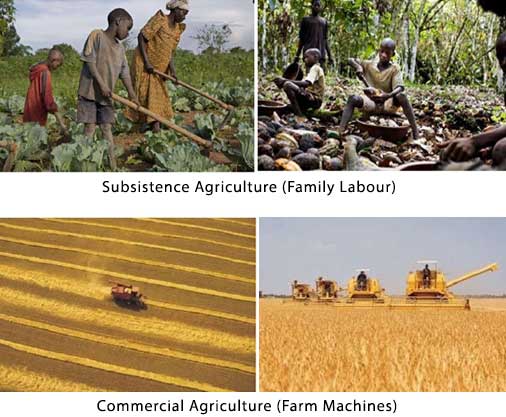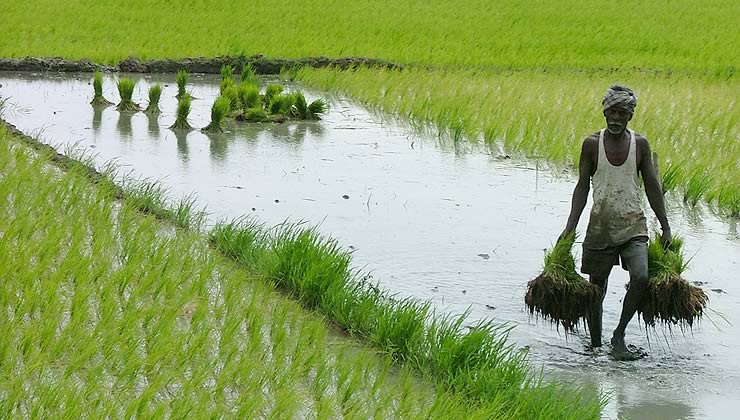Checking Out the Differences In Between Commercial Farming and Subsistence Farming Practices
The duality between industrial and subsistence farming methods is marked by differing purposes, functional ranges, and source use, each with profound implications for both the environment and society. Business farming, driven by earnings and performance, usually uses innovative innovations that can cause substantial environmental problems, such as dirt deterioration. On the other hand, subsistence farming highlights self-sufficiency, leveraging traditional methods to sustain house requirements while nurturing community bonds and social heritage. These different methods increase interesting questions about the equilibrium in between financial development and sustainability. How do these different techniques shape our globe, and what future directions might they take?
Economic Objectives
Financial purposes in farming methods commonly dictate the methods and range of procedures. In industrial farming, the primary financial purpose is to optimize earnings. This needs an emphasis on effectiveness and efficiency, accomplished with sophisticated modern technologies, high-yield crop ranges, and comprehensive usage of fertilizers and pesticides. Farmers in this design are driven by market needs, aiming to create huge quantities of commodities available in global and national markets. The focus is on attaining economies of scale, making sure that the price per device output is reduced, thereby boosting success.
In contrast, subsistence farming is mainly oriented in the direction of satisfying the instant demands of the farmer's family members, with excess manufacturing being minimal. The economic objective right here is usually not profit maximization, but rather self-sufficiency and danger reduction. These farmers generally run with minimal resources and depend on standard farming methods, tailored to regional environmental conditions. The main goal is to guarantee food safety for the home, with any excess fruit and vegetables marketed in your area to cover fundamental requirements. While industrial farming is profit-driven, subsistence farming is centered around sustainability and strength, showing an essentially different collection of financial imperatives.

Scale of Operations
The distinction in between commercial and subsistence farming comes to be especially evident when considering the range of operations. Commercial farming is identified by its large-scale nature, usually including considerable tracts of land and using advanced equipment. These operations are normally integrated into international supply chains, producing substantial quantities of plants or livestock meant up for sale in global and domestic markets. The range of business farming enables for economies of range, resulting in lowered costs per system via automation, boosted performance, and the capability to buy technical improvements.
In plain contrast, subsistence farming is generally small, focusing on producing simply sufficient food to satisfy the immediate demands of the farmer's household or regional community. The land location included in subsistence farming is frequently limited, with much less access to modern innovation or mechanization.
Source Use
Source usage in farming techniques exposes significant distinctions between commercial and subsistence techniques. Commercial farming, identified by massive procedures, commonly employs innovative modern technologies and automation to optimize using resources such as land, water, and plant foods. These practices enable enhanced effectiveness and higher productivity. The emphasis gets on optimizing outputs by leveraging economic situations of scale and deploying sources purposefully to make sure consistent supply and earnings. Accuracy agriculture is significantly adopted in business farming, utilizing information analytics and satellite innovation to check crop health and wellness and maximize resource application, additional boosting yield and source performance.
On the other hand, subsistence farming operates a much smaller sized range, primarily to meet the instant requirements of the farmer's family. commercial farming vs subsistence farming. Source application in subsistence farming is often limited by financial constraints and a dependence on traditional techniques. Farmers typically use manual labor and natural resources available in your area, such as rain and natural garden compost, to grow their crops. The emphasis is on sustainability and self-reliance instead than taking full advantage of result. Subsequently, subsistence farmers might encounter obstacles in source monitoring, including restricted access to improved seeds, plant foods, and watering, which can limit their ability to boost productivity and success.
Ecological Effect

Alternatively, subsistence farming, practiced on a smaller scale, normally uses traditional techniques that are a lot more attuned to the surrounding setting. Crop turning, intercropping, and natural fertilizing prevail, advertising dirt health and wellness and lowering the need for synthetic inputs. While subsistence farming usually has a lower environmental footprint, it is not without challenges. Over-cultivation and poor land management can result in soil erosion and logging sometimes.
Social and Cultural Implications
Farming practices are deeply linked with the social and social material of neighborhoods, influencing and reflecting their values, practices, and financial frameworks. In subsistence farming, the focus gets on cultivating adequate food to meet the immediate needs of the farmer's household, often cultivating a strong feeling of community and shared responsibility. Such practices are deeply rooted in regional traditions, with expertise gave with generations, thus maintaining social heritage and reinforcing public ties.
Alternatively, industrial farming is primarily driven by market needs and success, often leading to a shift in the direction of monocultures and large-scale procedures. This method can bring about the erosion of traditional farming techniques and cultural identifications, as local custom-mades and knowledge are replaced by standardized, commercial techniques. Furthermore, the focus on efficiency and revenue can in some cases lessen the social communication found in subsistence neighborhoods, as financial deals change community-based exchanges.
The duality between check my source these farming techniques highlights the broader social effects of agricultural selections. While subsistence farming supports social continuity and area interdependence, business farming lines up with globalization and financial development, often at the price of traditional social structures and social variety. commercial farming vs subsistence farming. Stabilizing these aspects stays a critical difficulty for lasting farming development
Conclusion
The exam of commercial and subsistence farming methods discloses you can find out more substantial differences in goals, range, source use, environmental effect, and social effects. Industrial farming focuses on revenue and performance through massive procedures and advanced modern technologies, typically at the price of environmental sustainability. Alternatively, subsistence farming stresses self-sufficiency, utilizing regional sources and standard approaches, therefore advertising cultural preservation and community communication. These contrasting strategies highlight the complicated interplay between economic growth and the demand for socially inclusive and environmentally lasting agricultural practices.
The duality between business and subsistence farming methods is marked by varying objectives, functional ranges, and resource utilization, each with extensive implications for both the setting and culture. While commercial farming is profit-driven, subsistence farming is focused around sustainability and resilience, showing a fundamentally various collection of economic imperatives.
The difference between industrial and subsistence farming ends up being particularly obvious when thinking about the range of operations. While subsistence farming sustains social continuity and neighborhood connection, commercial farming aligns with globalization and economic development, frequently at the expense of traditional social structures and social variety.The assessment of business and subsistence farming practices discloses considerable distinctions in objectives, scale, source usage, environmental impact, and social implications.